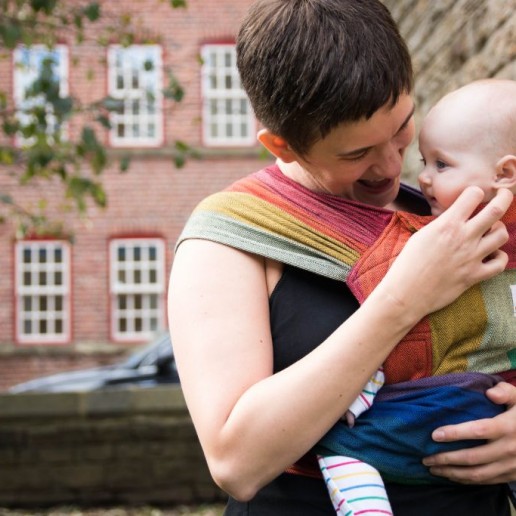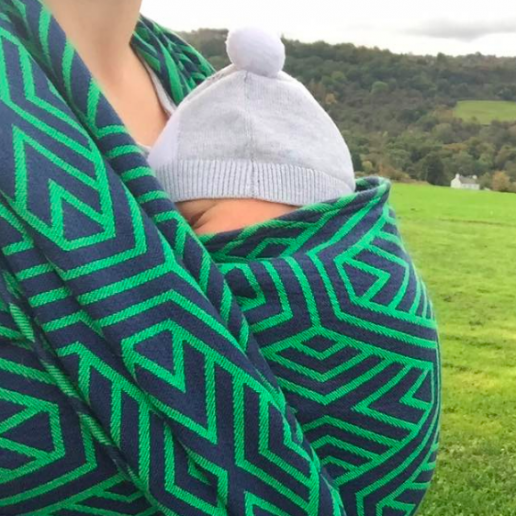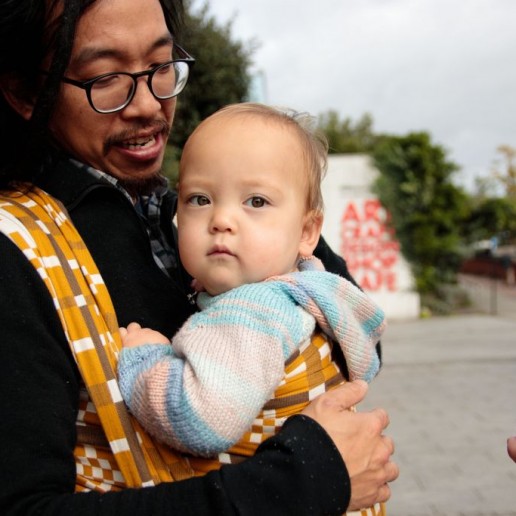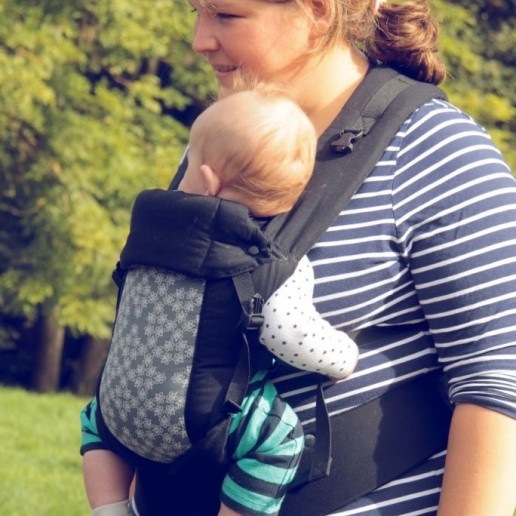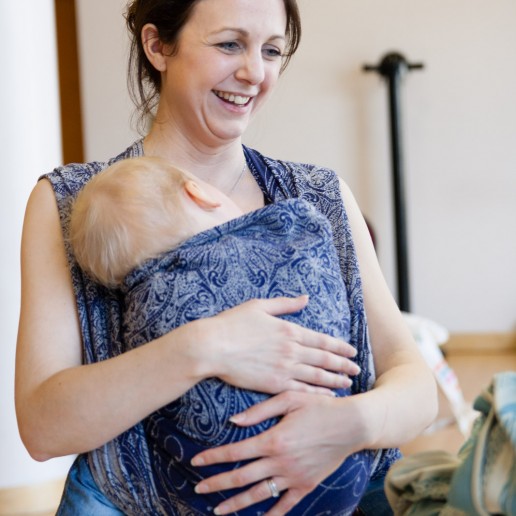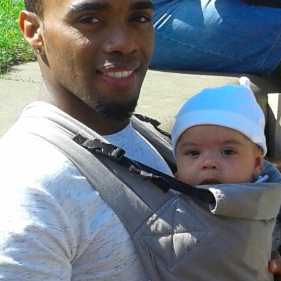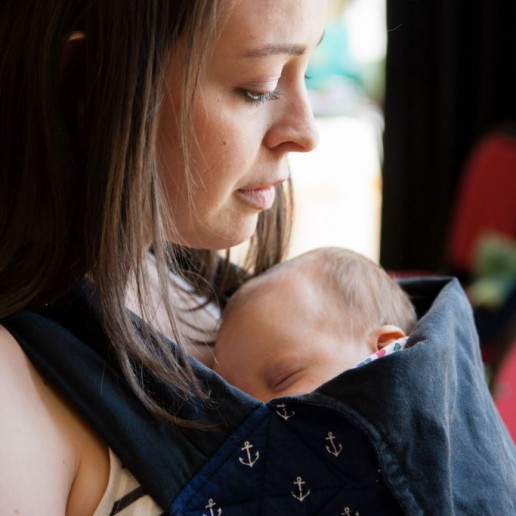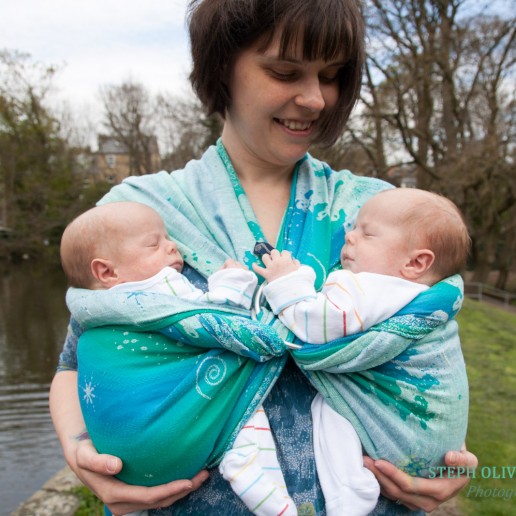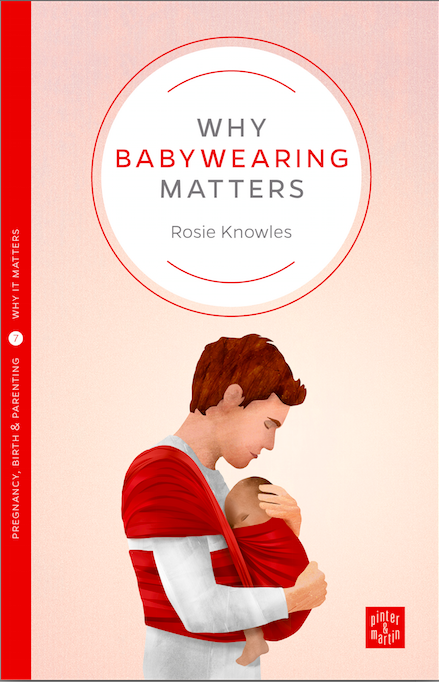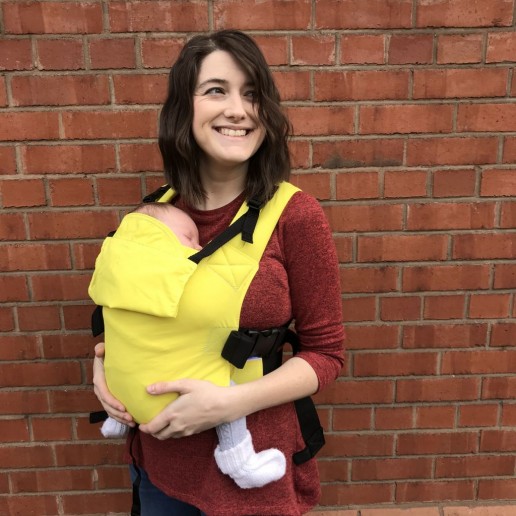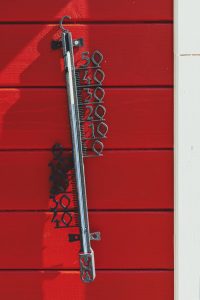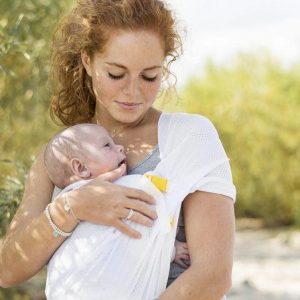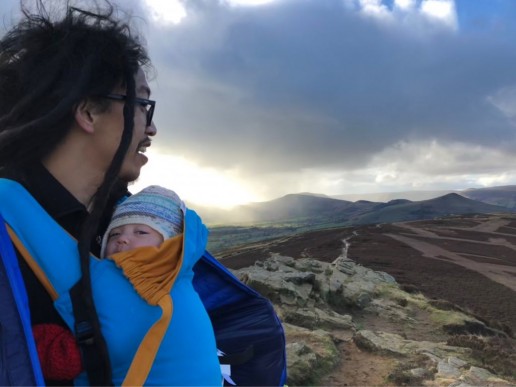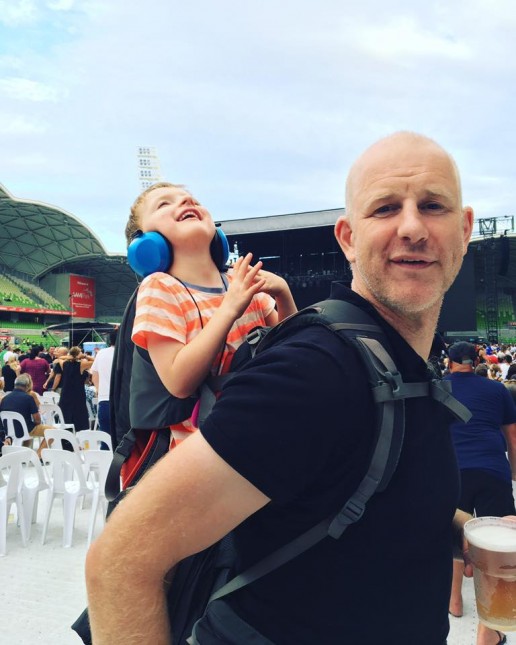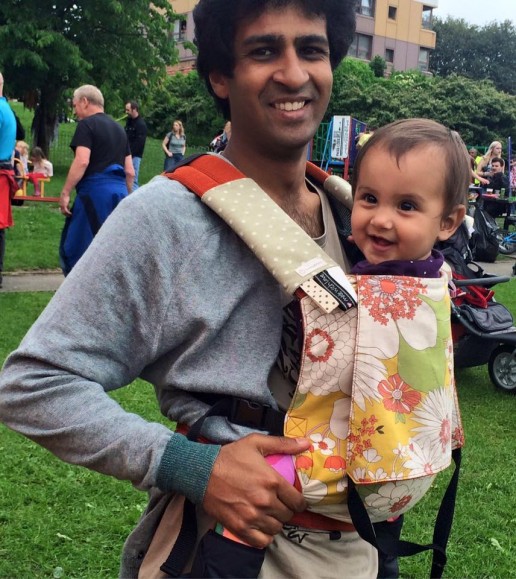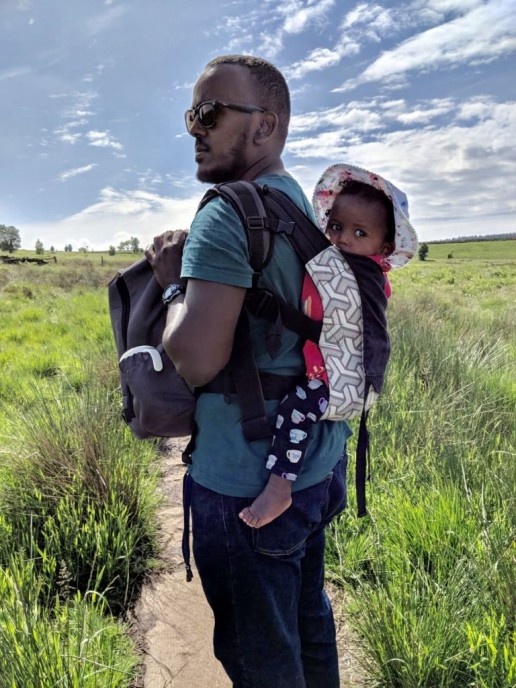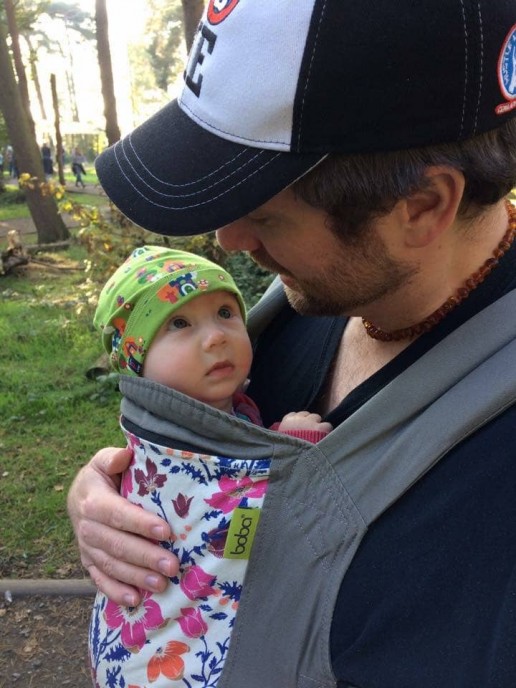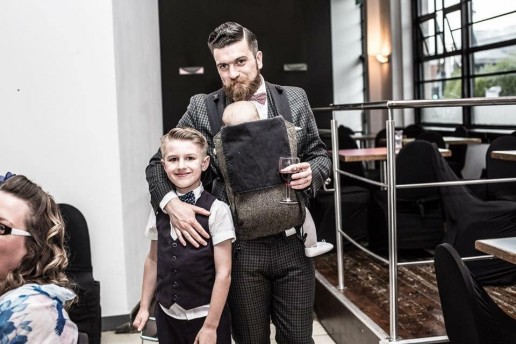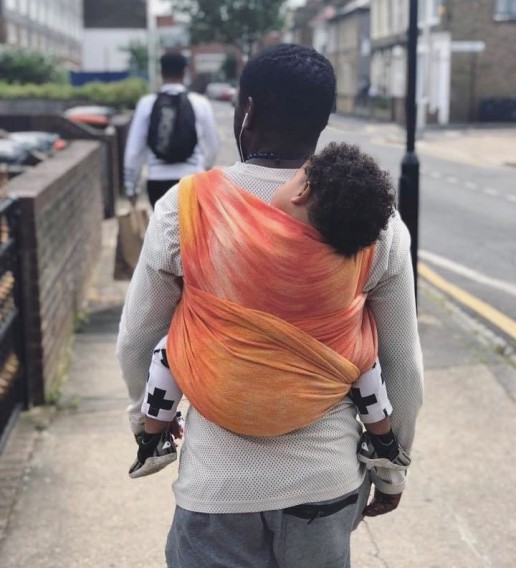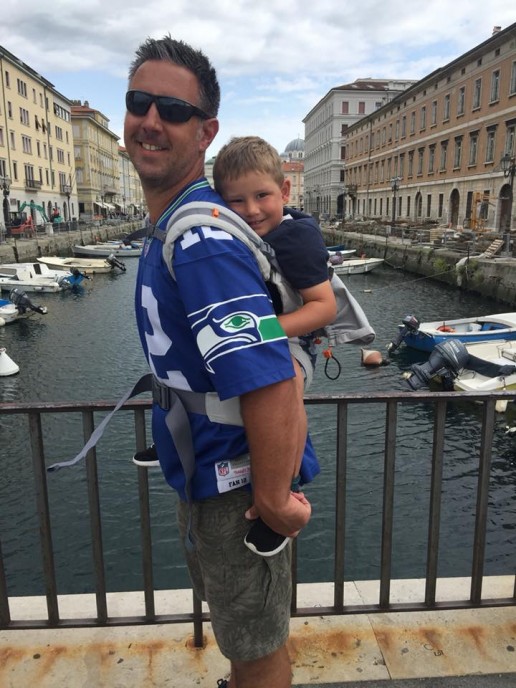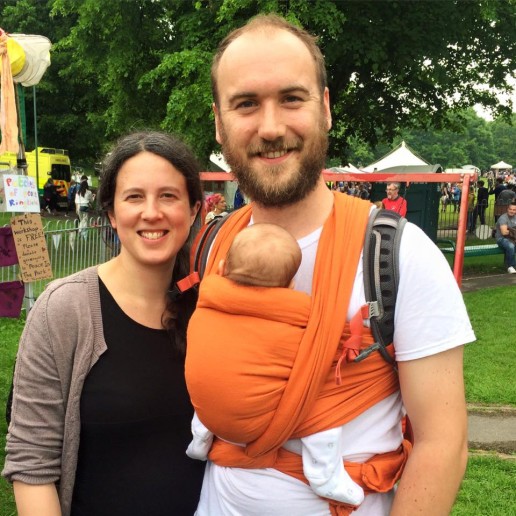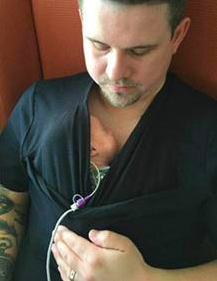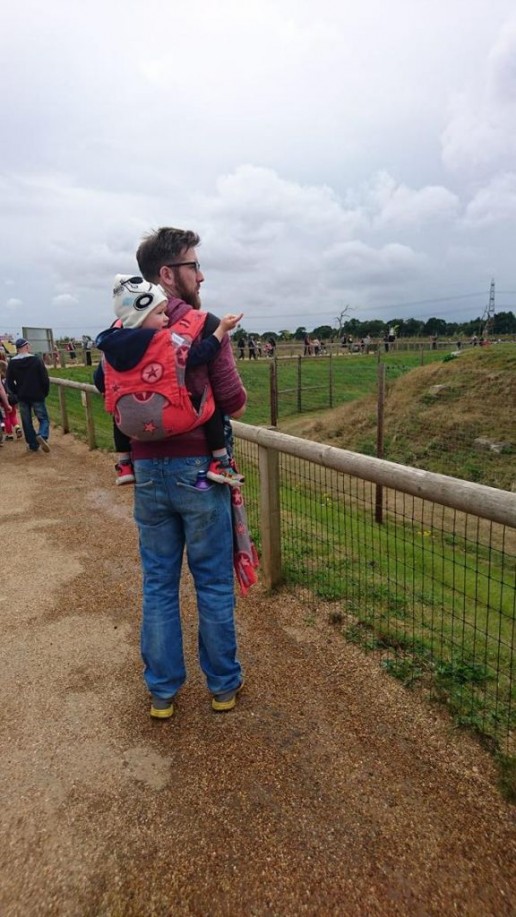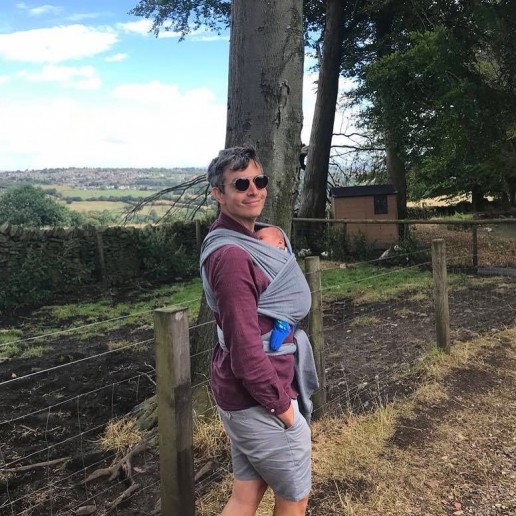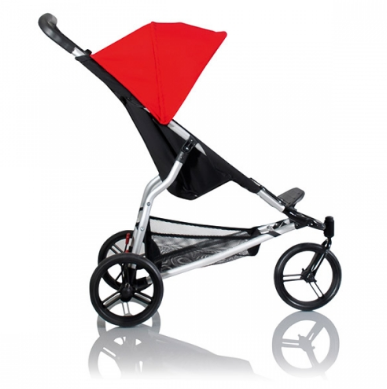Positive Effects of Carrying for Baby
Carrying your baby is essential to their normal physical, psychological and neurological development. Human bodies are adapted to be a carrying species, it is part of our evolutionary history, however, our bodies are not as fit or as strong as our nomadic ancestors. It can be hard to carry in arms for prolonged periods of time. Nevertheless, babies need to be held, so a good, safe sling can be very useful in to help with increasing carrying frequency.
Remember, it is the relationship of closeness and loving touch that matters, as well as the position adopted in a good sling. The type of sling or the fabric that you use is just personal preference.
The benefits of babywearing- or the positive effects of carrying for baby are many; here are a few.
The positive effects of babywearing for baby are many; here are a few.
- It encourages bonding with the parent and helps to meets baby’s strong need for a sense of security and attachment, which will lead to greater confidence and independence later in life, as well as greater resilience and better long-term physical health.
- It helps to regulate temperature, heart and respiratory rates, and emotional and physical growth. This can be especially useful for premature babies (the term “kangaroo care” and “fourth trimester” come from this concept) or children who are unwell.
- It promotes and encourages the establishment of a successful breastfeeding relationship, in part due to the oxytocin release from the soft touch. Mothers who carry their children in soft slings are more likely to breastfeed beyond the early weeks.
- Soft touch has many benefits for neurodevelopment and and helping the social brain to form.
- Regular close skin contact is believed to help babies regulate their circadian rhythms better and distinguish the difference between night and day sleep.
It reduces crying, both frequency and duration, (Hunziker and Barr 1986) and can improve sleep. It is safe for your baby to sleep in the sling, if the airway is well protected. Less crying means more time to be in “quiet absorption’, promoting learning and positive interactions with the world. The Esposito study discusses some of the mechanisms behind movement and how carrying is calming for babies.
- Babies with colic can be hard to soothe, but the motion gained from being gently rocked in a sling while the parent/carer walks may help to settle them, and also the parent/carer may feel less helpless. There is no evidence to suggest that babywearing actually reduces colic itself.
- Many parents of reflux babies spend a lot of time holding them upright and have tired arms and sore backs! A good sling that supports an upright position can thus reduce regurgitation and the discomfort of reflux. A spread squat position helps relax puborectalis muscle, to aid bowel elimination.
- The motion experienced by a baby being held by the carer allows the vestibular balance apparatus to develop more rapidly and enhances neuromotor development and muscle strength. It improves neck and head control, but is not a true substitute for “tummy-time” (tummy-time head-lifting is against gravity from a prone position). This is more marked with dynamic in-arms carrying (where this is possible). A sling or carrier should never be used as a prolonged restraint (unless danger is present such as crossing the road).
- Children should always be encouraged to be active as much as possible (WHO 2019) and if they want to get down and it is safe and practical to do so, this is ideal. However, this doesn’t mean that a child who is otherwise very active needs to be automatically removed from the sling after a certain amount of time. Sleeping babies do not need to be disturbed, just gently adjusted to ensure safety.
- It is believed to encourage sociability and language development; being able to hear the parent’s voice close up and watch their interactions with the world and other people from a higher vantage point is beneficial and also aids formation of family relationships. Studies into reduced talking in outward facing buggies highlights the importance of children being able to communicate easily with their carers.
- It allows baby to retreat from an overwhelming world and snuggle into the parent’s body for respite when needed. This is harder to do with world-facing carries, so encouraging parental responsiveness with front-facing out positions is important. (The challenges of facing forwards is covered in more depth here)
- Babies can learn very easily from a place of consistent safety, as their brains are not engaged with mere survival.
- Good, correctly designed slings that encourage the physiological spread-squat "M shape" position (that mimics hip-perching) can help prevent hip problems later in life in those children at risk of hip dysplasia. There is currently no convincing evidence that narrower based carriers cause hip dysplasia in otherwise healthy hips.
- Babies who are carried are less at risk of plagiocephaly (the flattening of the skull bones at the back of the head from prolonged periods lying on the back, more common since the “Back to Sleep” campaign). Slings are recommended as one solution (by the NHS, too!)
Further reading
"Why Babywearing Matters", Rosie Knowles, 2016
To have and to hold: Effects of physical contact on infants and their caregivers, Infant Behavior and Development, Volume 61, November 2020
Read some more articles about why carrying and using slings are good for babies below
Attachment, Babies and Carrying (HuffPost)
Secure Attachment and the Fourth Trimester
Adverse Childhood Events and building resilience in children
Seven Reasons to Carry your Baby (HuffPost)
Why Carrying Matters (Juno Magazine)
If you would like to read in more depth on this subject, my book “Why Babywearing Matters” discusses much of the evidence base for the importance of carrying. It is normal behaviour for the human species to carry their infants close to their bodies; the book considers the anthropological, physiological and psychological reasons for this. Carrying really matters.
Summer Slings and Keeping Safe in The Sun - Carrying in the Heat
Summer slings and keeping safe while carrying in the heat is a hot topic among regular sling users. Carrying in warm weather can be hot and bothersome!
“Can I carry my baby in this heat? We are getting way too hot with our sling!” is a question I am asked many times in the few warmer months we get in the UK. Babies are warm little creatures, and in the summer humidity, they can feel like hot-water bottles on your chest. Many parents worry and stop using their slings in the summer as they don’t enjoy the sweatiness and stickiness that can come with hot-weather babywearing, and then miss the closeness. Sometimes children insist on being carried, so you get hot anyway, or pushchairs aren’t an option.. so what is a parent to do?
First of all, don’t worry. You won’t overheat your baby by carrying him. Women have been carrying in the heat for generations, in far hotter climes than the UK, they carry their children daily and come to no harm. The body is able to thermoregulate appropriately. However, there are a few things you can do to make the experience more pleasant for you both.
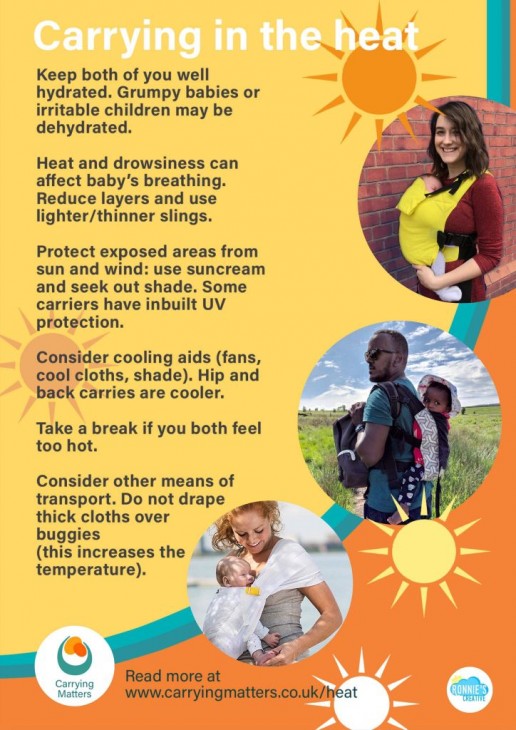
1) You and your baby need to be safe in the increased temperatures.
- Keep well hydrated. Baby needs to replace all the fluid she is sweating out – don’t underestimate her need to drink or breastfeed in warm weather. Take frequent breaks from your summer activity to check on your child and allow this re-hydration. Breastfeeding mums will need to increase their own fluid intake to compensate for the higher milk demand (breast milk becomes more watery and thirst-quenching in hot weather, amazing!) and everyone will need to drink more. Exclusively breastfed babies can get all their fluid requirements by frequent feeding and are unlikely to need any other fluids if they are feeding well. Bottle fed babies may well need some cool boiled water in addition to their formula. Sweating actually helps to cool the body down, by using the heat beneath the skin to evaporate the moisture. The better hydrated you are, the easier it will be to provide sweat. Adults are better able to thermoregulate than small children, so you can actually help to cool your hot child down by skin to skin.
- Think about the clothing you’re both wearing. Layers of clothes trap air, and therefore can keep heat in in cold weather.. so in hot weather, wear less layers on yourself, and reduce your child’s clothing too. Natural fabrics tend to be cooler – pure cotton, linen, bamboo allow breathability more than man-made fabrics and tend to cause less stickiness. The sling counts as layers of clothing, so take that into account.
- Protect your child from sunburn and windburn. Muslins can be draped over exposed legs or heads – but they are very thin and babies may still burn through them if not careful. UV protection covers from Snooze Shade can help for buggies. Hoods can be a mixed blessing in hot weather, as they can trap warm air when closed, thus increasing the temperature inside the carrier and reducing the flow of air around. A light, tie-on broad brimmed hat with neck coverage is often a better option. Clothing can help – lightweight long sleeves can add protection. Some slings provide mechanical protection from the sun, and some have UV protection features as well. Suncreams are an important part of caring for your child’s health (especially if they fall asleep and you are distracted.) Please check your sun cream is appropriate for your baby’s age and skin. Parasols can provide some shade.
- Cooling aids can be helpful. Some people will place a cool, damp muslin between their bare skin and baby’s, for coolness (others will use dry muslins to wick away sweat). Handheld fans can be very useful to blow cool air around. Sometimes people will use cool-packs to lay against skin every now and again, for brief periods. (I think this is safer than using freezer blocks in carrier pockets next to baby skin. Frozen peas against an ankle begin to hurt after a few moments, and babies may not be able to communicate the source of their discomfort well enough.) Splashing cool water can provide some relief… and regular breaks from the sling in the shade should be part and parcel of ensuring everyone is comfortable.
- Choose the time of day you use your carrier and consider other means of transport. It may be useful to just use your carrier in the cool of the morning or for evening strolls rather than carrying in the heat of the midday sun. Parasols may offer some shade as you walk along. Some parents and children may dislike the sweatiness that comes from close contact in slings and may therefore feel cooler with in arms carrying, or in a pushchair. If you use a buggy do make sure that the seat itself isn’t hot from the sun and that you allow plenty of fresh air inside the chair as temperatures can rise very quickly indeed. The sun cover may indeed keep the sun off but can also trap heat and carbon dioxide due to the reduced air circulation, which can be dangerous for children. The Snooze Shade offers a safe way to protect babies in buggies
Such measures may go a long way to making you and your baby feel a lot happier in the sling that you have.
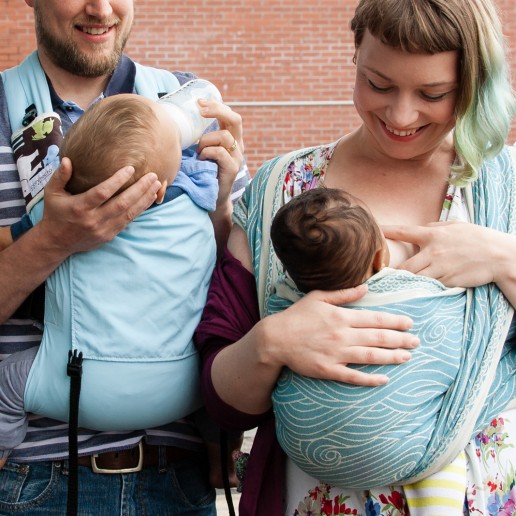
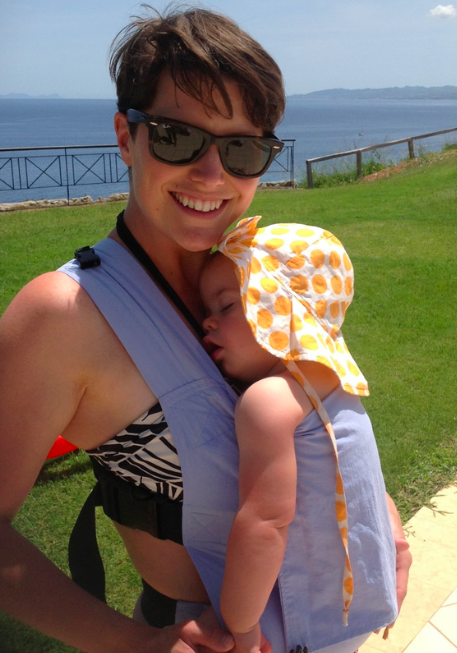
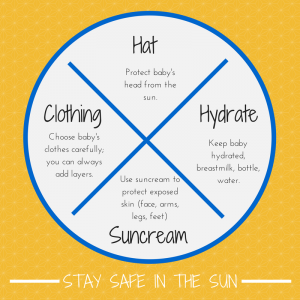
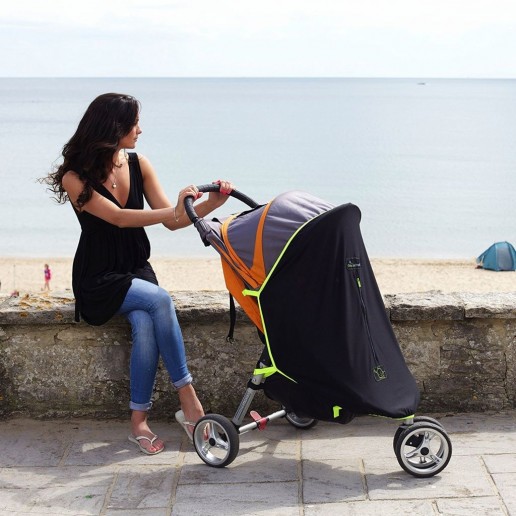
2) Use your current carrier in a way that is more appropriate in hot weather
Please note that each suggestion may not work for every situation. If you are unsure and would appreciate some more help, do get in touch with your local sling consultant/library for some support! The Sling Pages has a comprehensive list of such resources.
Stretchy Wraps
- When stretchy wraps are used with the classic pre-tied Pocket Wrap Cross Carry, it is best to have three layers across baby. This is because the elastic nature of the sling does not provide enough support with only one layer, and two cross layers can be easily divided by a baby pushing away or arching backwards. If you want to use your pre-tied stretchy in the PWCC or a hybrid stretchy carrier with just two layers, ensure the cross passes are well distributed from knee pit to knee pit and up to the neck on both sides, be well aware of the risks and be vigilant of your baby’s movements, especially if you are likely to be distracted.
- You could try using a thin gauze scarf in place of the third layer of hybrid stretchy carriers.
- Front double hammock carries and hip carries (two-layers) are an option. They can be harder to master.
- Seated sideways carries may reduce the body surface contact.
- If you are using an old-style stretchy wrap folded in half (six layers), try using it unfolded (three layers).
Woven Wraps
- Try single layer front carries to reduce the number of layers over baby, such as a kangaroo carry which can have open sides.
- Try hip carries to reduce the amount of fabric around your body.
- Try high back carries (this may reduce surface area contact).
Ring Slings/Mesh slings
- These are often cool anyway. Try a seated sideways position to reduce the amount of surface contact.
- Try a back carry or a torso carry which may feel cooler.
- Fold the shoulder fabric that is cupping your shoulder over itself a little to reduce the coverage across your upper back. Flipped shoulders can also help with this.
Meh Dais/Half Buckles
- Try using your meh dai with the passes unspread across baby’s back (ensure the bunched up passes are not too tight and rubbing into his knee pits) to allow some airflow at the sides.
- Try a hip or back carry.
Buckle Carriers
- Try a hip carry, if your carrier has this functionality.
- Try a back carry if your baby is able to sit unaided (enough upper body strength).
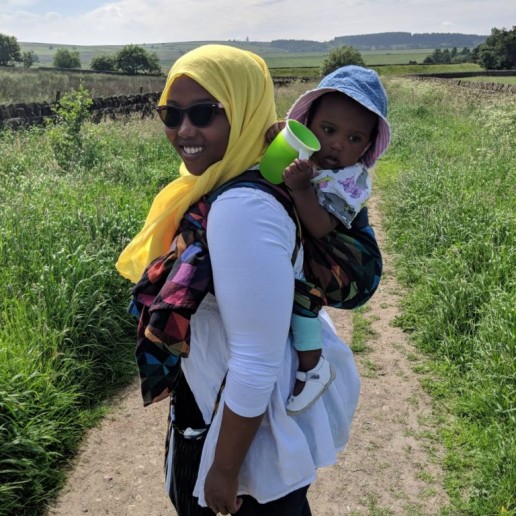
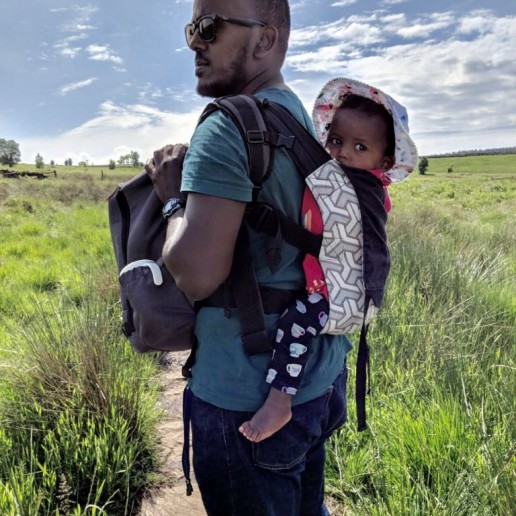
3) Try a carrier that is more suited to the weather
Your local Sling Library may have a few options you can try out for carrying in the heat – it is always worth investigating to see what works for you and your baby comfort-wise. Sometimes hiring for a holiday may be cheaper than buying a new sling!
Stretchy Wraps
There are several lighter weight stretchy wraps available which will feel cooler than the heavier, thicker brands. Bamboo is breathable and cooler, and look at how thick the fabric is before you buy. Stretchies are wonderful for little babies but need a minimum of two, ideally three layers. Some hybrid carriers have mesh panels which can reduce warmth.
Woven Wraps
Lightweight wraps (usually those with a lower density (the g/m2) are cooler and lighter than thicker and heavier ones) can be very useful. Gauze wraps are thin and cool and good with smaller children. Thin cotton wraps are also an option – but may not be as sturdy for bigger children. There are many supportive, lightweight , breathable cotton wraps around and some brands make special lightweight cotton blends with special fibre types for strength (eg “ice cotton”).
There are thick and thin versions of almost every combined blend of woven wrap available, so it is worth doing some research into the thickness and density. Traditionally, linen, hemp and silk are used to add strength and sturdiness to the softness of cotton, and can be lovely lightweight toddlerworthy wraps, but some blends can be thick and warm. 100% linens are often cool and supportive, and loose weaves can be airier than dense ones. Some people find merino blend wraps cool in warm weather, as the breathable wool wicks moisture to the surface to be carried away.
Learning how to use a shorter wrap may be another way of reducing the amount of fabric wrapped around your body.
There are a few mesh wraps around, such as the Fil’Up, which can be very cool to use.
Ring Slings/Mesh Slings
Ring slings or mesh slings like the MiniSling are a great option in warmer weather, as they can be quick to take on and off and only cover half of your body. They are single layer slings, too. Again, like any woven wrap , the fabric involved can make a difference to its warmth. Lightweight muslin ring slings, 100% linens or thin but strong cotton/blends are a good option here. Be cautious about buying thin ring slings from eBay or from non-recognised retailers. There are mesh water ring slings which can be useful in the water, but can also be a little sweaty in dry, hot conditions due to the fabric used. Simple pouches can be a good option as well, if used safely in an upright position, and there are several mesh carrying aids like the Suppori and the Tonga which can help take some of your child’s weight and remain cool. Carrying aids are not hands free, however.
Meh Dais/Half Buckles
Sometimes these can feel warm, if there are multiple layers of fabric in the panel or if the fabric used is thick and dense. Sometimes lighter weight meh dais/half buckles can work well, tied in ways that allow airflow at the sides or with straps not spread across the whole of the parent’s back.
Buckle Carriers
Some buckle carriers are designed for hot weather use, either in the lightness of the fabric they use, the lack of padding, or their design (mesh panels etc). Some people will find rucksack style carriers less warm than cross strap carriers, as there is less padding across the back (when used in front carries). Solarweave fabric is useful and some carriers make a feature of their UV resistant fabric too. Some carriers have lightweight mesh panels or less padded straps, or thin waterproof fabric . Those with thick padded waists may feel just as hot to wear as their standard counterparts.

In summary, yes you can carry your baby in hot weather, there are many things you can do to make it more enjoyable for both of you. Be mindful of your baby’s comfort and be careful of both your needs, and you won’t go far wrong!
Carry Me Daddy!
“Dear Daddy

When you hold me I feel happy. You are strong and I am safe in your arms. The more time I spend with you the more I trust you, and the more I can let you look after me when Mummy isn’t here.
I love to hear your breathing and the sound of your voice rolling around in your chest. I can hear your heart beating and it steadies me. I can hear you best when I am close to you. I love it when you look at me with your proud eyes, it makes me feel good. I feel loved.
I love being carried on your chest where we can chat till I am ready to snuggle contentedly to sleep.
I love my rides on your shoulders and on your back. The world is so interesting from up high!
I love the games we play and the way you make me laugh till I have no more breath in my body. I love it when you hold me on your lap to read to me. I love it when you hold my hand.
Carry me Daddy, while you still can!”
In-arms carrying and all other means of close and regular contact (such as noisy physical play) is of enormous value in building bonds between fathers and their children. 1 in 4 children lack strong attachment relationships, and slowly our society is recognising the need to address this. In arms carrying can be hard work, and a good comfortable baby or child carrier can make this much easier. Babywearing dads are becoming more and more visible, which is great news for families and for our society.
There can be a common myth that is only mothers who bond with their children in depth, and that the changes in her brain with parenthood are unique to her. This isn’t the case, fathers’ brains are also deeply affected by their caring role and they form strong, lifelong connections to their children if they are closely involved with their young baby as they grow. Bonding can be encouraged in many ways, not just though feeding the baby (which is another common myth). Babywearing is one tool for developing a deep relationship.
Here are some fathers talking about babywearing, what it means to them and why they do it!
Mohamed
Babywearing! How are you faring? Are they still staring? As a father of twins who liked getting things done, there was only so far my two hands could take me when I had two babies to hold. I was hesitant at the science behind stretchy slings when I was first told you could carry more than 1 baby in them, the picture shows how quickly that evaporated into pure elation and joy. "I've got my hands back!" I remember thinking. That was the start to an awesome journey where there was nowhere I couldn't go with the twins. Beyond the physical strength which babywearing gave, I feel like it helped me show my girls that no matter what, I was able to lift them and raise them above whatever it was they were facing and give them a different view while still supporting myself. Why are you fearing if all you are doing is baby wearing?
Slings and Prams and Guilt
“I have a confession to make. I like my pram; sometimes I choose it over my sling. Does that mean I’m not a real babywearer?”
“I feel guilty if I pick the pram for days out when I know the sling is so beneficial.”
“I feel selfish if I use the buggy, but sometimes my body needs a break.”
Slings and prams and guilt often seem to go hand in hand; as if there wasn’t enough guilt involved in being a parent in the first place.

I hear phrases like these from time to time, and while I am delighted that these families have discovered the good things that come from using a carrier, I feel sad that guilt has started to creep in, and that divisions are developing. There is more than enough guilt in the world for parents; how they choose to feed, how they choose to dress their children, and now it seems, how they choose (or don’t choose) to carry. I am really keen to prevent any “mommy wars” regarding carrying from springing into life, so here are my answers to this sort of situation.
Carrying DOES matter. Carrying your child is an important and necessary part of the “fourth trimester” early months of life, it is part of the essential bonding (imprinting) process whereby attachment is created. Secure attachments with a loving caregiver are the bedrock of future positive mental health and the springboard into healthy emotional relationships in later life. For young babies, loving touch and holding are one of the major means of providing this sense of being loved and being secure. Few of us are able to resist the urge to hold our crying children, to provide them with relief and to be their safe space, it is instinctive in us. We should all spend a lot of time holding and loving our babies and allowing them to learn to love us back.
However, modern life is demanding and society encourages us to think that early independence is desirable; that children should not “hold us back.” It is important to care for all members of the family; baby, siblings and parents equally; and this is where using a sling can help. A baby needs to be carried; a sling will allow this to happen while life can continue around them. A sling can mean the childcare can be shared with other adults, a sling will allow a parent to get out and around without the need for lots of equipment.
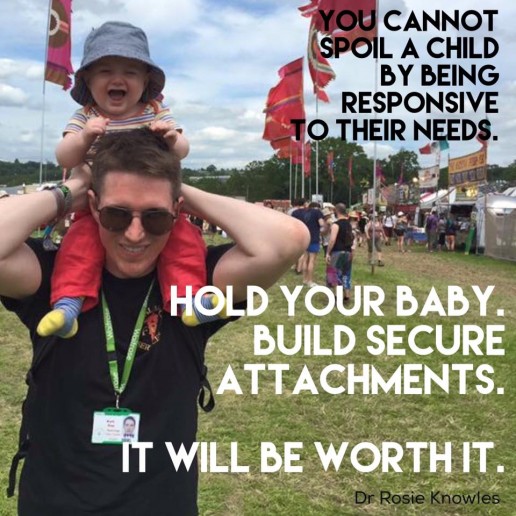
That said, there are many ways to keep a child close without the need to use a sling 24 hours a day. In-arms carrying, cuddly play, breastfeeding, bedsharing, piggybacks, reading stories with baby on your knee and so on are all ways to be in close contact. It is indeed vital to keep up with regular close contact well into the 2nd year and beyond as our children’s brains are still learning about love and attachment – it’s an investment in their future mental health. However, once babies begin to take control of their own bodies and learn how to move they need the freedom to do so.
Prams and buggies are a perfectly valid, convenient and useful way of transporting your child around and there is no reason to feel you are disadvantaging your child by using one instead of the sling today, or depriving her of something, especially if she can see you and remain in communication. You can meet her needs for closeness some other way later in the day. There is no reason to “ditch” the pram if you find it helps you in your parenting. A pram is (like the sling) a tool for getting around and carrying things, and may be easier in many circumstances, just as a sling can be easier in others (eg public transport, busy shops, off-road exploring). There are many ways to carry other things when your baby wants to be up; special bags that fit around the sling.. or a buggy!! Many families use and love both types of transportation, choosing what will suit the situation best.
Some children may just prefer the space of the pram; this is not a rejection of you, but may just be an expression of their personalities or their wish to explore what they can do with their limbs. It may be that your little boy feels too hot in the carrier that you have, or just fancies a change! Your toddler may also enjoy being able to see the world from a different perspective. If your baby loves the pram and doesn’t want to go in the sling today (assuming of course it is a comfortable and well fitting one – see here if your baby seems to hate the sling), that’s just fine. You are being responsive to your child; there is nothing to feel guilty about.
Sometimes YOU may just prefer the pram over the sling, especially if you are feeling a little claustrophobic or touched out, or just tired. Maybe you have two children, or more, and the buggies are the best option!
We don’t live in the same supportive communities these days and it can be hard for one (or two) people to shoulder the load of responsive parenting alone 24hours a day, we all need a break sometimes. “Villages” of old would share the carrying/ feeding/ entertainment more widely, which provided a much better balance of life than many of us are able to find today. If you want to use your buggy, use it and enjoy it, you can cuddle your baby later (or you may have already used the sling today.) Do not feel guilty that you are not being the best parent that you could be.
Do not feel guilty if you feel you just can’t carry today. There is no such thing as a perfect parent and social media sharing doesn’t present a true picture of people’s lives; it can look like others are using their carriers hour in hour out, day after day from their photos, but these don’t show the in between hours or days where the sling is not in use (and the pram is!) Sometimes prams are an expression of our personalities too, just as the carriers we choose can be…
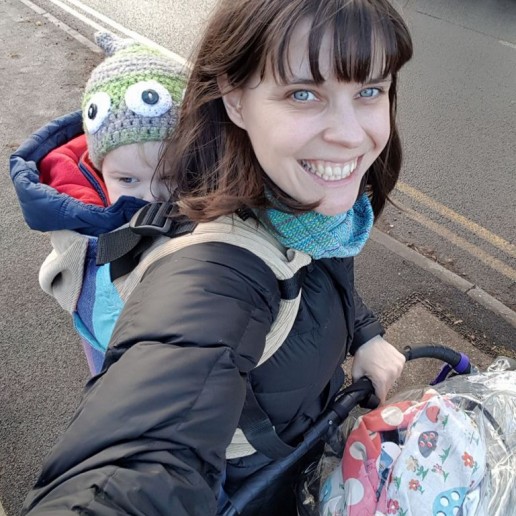
All safe and responsive carrying is good
; the sling you choose to use is not important, as long as it is safe and comfortable. A buckle carrier is as valuable as a mei tai or a woven wrap or stretchy or a ring sling. Even brands of buckle or wrap is irrelevant; what matters is that you and your child are together, in close contact, safe, and enjoying each other’s company, or sleeping in contentment.
If you are a sling user, this is a great opportunity to avoid creating a culture of guilt and judgement. The parents you see using a pram to quieten a crying baby may well have found this works better for sleeping than their sling. The mum you see pushing a pram in crowds may feel her baby is safer inside the pram than being bashed by passers by in a sling. A parent carrying a heavy toddler in their arms after a melt-down may well have chosen not to use their sling today. iIt is important to be kind and recognise that one moment is not a whole life, and we do each other a dis-service if we unintentionally spread the message that either prams or slings are superior, or if we stare and make comments about others that could be overheard. All safe slings are of great value, and we should be cautious about what message we send to the new parents around us.
I’ll finish by reiterating that carrying IS important. We should all carry our babies and spend as much time in close contact with them as we can, be that in a sling, in arms, hand holding and so on. We should try to carry our children as much as possible, as there are many good reasons to do so. That does not mean that we should feel guilty if we choose to use prams or buggies as well, or if we choose to use one kind of sling over the other.
Oh, and of course it is fine to come to a sling meet/sling library session with your pram! And no, you definitely don’t need to feel embarrassed if you see me out and about and you are using your buggy!

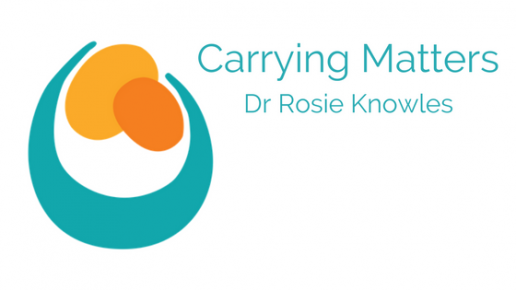
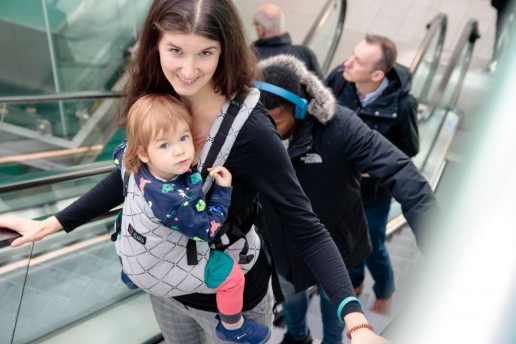
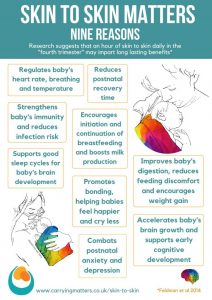 It reduces crying, both frequency and duration, (
It reduces crying, both frequency and duration, (